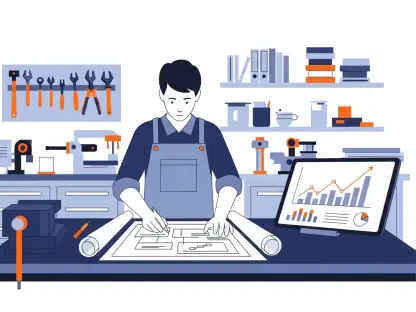Blockchain technology has brought about a significant transformation in various industries, and peer-to-peer (P2P) lending is no exception. By leveraging the decentralized and transparent nature of blockchain, P2P lending platforms have been able to enhance security, streamline processes, and democratize access to financial services. This article explores the key ways in which blockchain has revolutionized the P2P lending landscape.
Enhanced Security and Transparency
Decentralized and Tamper-Proof Ledger
Blockchain technology introduces a decentralized and tamper-proof ledger that records every transaction. This ledger ensures that all parties involved in a P2P lending transaction can independently verify the details but cannot alter them. The immutable nature of blockchain significantly reduces the risk of fraud and enhances trust between borrowers and lenders. One of the core attributes of blockchain’s decentralized ledger is its ability to provide a transparent and unalterable record of transactions. As a result, the increased transparency has brought about a higher level of accountability, which has always been a challenging aspect for traditional financial institutions.
In addition, the decentralized ledger system expedites otherwise lengthy processes, such as borrower identity verification and the assessment of creditworthiness. This efficiency stems from the automation inherent in blockchain technology, which significantly reduces the margin of human error. Platforms like SALT Lending exemplify this capability, offering loans backed by cryptocurrency. In this way, blockchain not only ensures lender security but also broadens access to credit, making financial resources available to a more diverse population.
Boosting Trust and Reducing Risks
The transparency provided by blockchain technology has been instrumental in boosting trust within the P2P lending ecosystem. Traditional financial institutions often struggle with trust issues, but blockchain’s ability to provide a clear and unalterable record of transactions has mitigated these concerns. The increased transparency offered by blockchain reduces potential risks, making P2P lending a more attractive option for both borrowers and lenders. By contrast, conventional financial systems often face challenges related to fraudulent activities due to the lack of transparent verification processes.
Blockchain has simplified complex and time-consuming processes, such as borrower identity verification and creditworthiness assessment. By automating these procedures, blockchain technology has made them more efficient and less prone to human error. The example of SALT Lending, which offers loans backed by cryptocurrency, illustrates how blockchain can enhance both access to credit and lender security. Utilizing a decentralized ledger, blockchain removes the need for multiple verification steps and diminishes instances of data manipulation, ultimately leading to more robust security measures within P2P lending platforms.
Elimination of Intermediaries
Direct Lending and Borrowing
One of the most significant impacts of blockchain on P2P lending is the elimination of intermediaries. Traditional lending processes often involve banks or other financial institutions, which can slow down transactions and increase costs. Blockchain technology enables direct lending and borrowing, making the process faster, clearer, and usually cheaper. This direct connection between borrowers and lenders streamlines the entire process and reduces overhead costs, allowing for more competitive interest rates.
Decentralized Finance (DeFi) platforms like Aave have been at the forefront of this transformation. Aave allows users to lend and borrow cryptocurrencies directly, without the need for a bank. Smart contracts on these platforms automatically handle interest, terms, and repayments, providing total transparency and efficiency. This democratizes access to loans, extending financial services to anyone with an internet connection. By removing banks and other third parties from the equation, blockchain empowers users to have more control over their financial transactions.
The Role of DeFi Platforms
Decentralized Finance (DeFi) platforms have played a pivotal role in showcasing the practical applications of blockchain technology in P2P lending. Aave, for instance, has revolutionized how loans can be issued and managed, bypassing traditional banking systems entirely. By allowing individuals to directly engage in the lending and borrowing of cryptocurrencies, Aave epitomizes the disruptive potential of DeFi platforms. The use of smart contracts within these platforms ensures that loan terms and repayment schedules are adhered to with precision and transparency.
Smart contracts have revolutionized the P2P lending space by automating and securing the entire lending process. Traditional systems rely heavily on intermediaries, but smart contracts execute loan terms, process payments, and maintain transparent records without human intervention. This automation reduces the time required for loan processing, mitigates delays, and lowers the risk of fraud. In doing so, DeFi platforms not only enhance the efficiency of financial transactions but also significantly improve their security and reliability.
Innovative Financial Strategies
Liquidity Pools
Aave utilizes liquidity pools instead of pairing individual lenders with borrowers. In this system, users deposit assets into a shared pool, and others can borrow against collateral. This approach reduces fees and enhances accessibility, as it operates autonomously without the need for a central authority. Liquidity pools also provide a more flexible and efficient way to manage funds within the P2P lending ecosystem. By diversifying risk and increasing liquidity, these pools ensure that both lenders and borrowers benefit from a more stable financial environment.
The integration of liquidity pools not only democratizes access to capital but also optimizes the use of available assets. By pooling resources, users can earn interest on their deposits while facilitating the borrowing needs of others. This model contrasts sharply with traditional banking methods, which often involve higher fees and more stringent borrowing criteria. Additionally, the decentralized nature of liquidity pools eliminates the need for continuous oversight by a central authority, further reducing operational costs and increasing the overall efficiency of the system.
Flash Loans
Aave offers innovative financial products such as flash loans, which enable uncollateralized borrowing provided it is repaid in the same transaction. Flash loans demonstrate the versatility and potential of blockchain in modernizing P2P lending. These products showcase how blockchain technology can create new financial strategies that were previously impossible within traditional banking systems. Consequently, flash loans have opened up new opportunities for arbitrage, quick capital allocation, and dynamic financial maneuvers that require immediate liquidity.
The concept of flash loans is particularly intriguing due to its novel approach to risk management and collateralization. By ensuring that loans are repaid within the same transaction, the system effectively mitigates the risk associated with uncollateralized lending. This method allows users to engage in rapid, high-frequency trading and other financial activities that necessitate short-term borrowing. The advent of flash loans underscores the innovative capabilities of blockchain technology and its potential to reshape the financial landscape by introducing more flexible and responsive financial instruments.
Future Prospects and Recommendations
Continued Innovation
The integration of blockchain technology into P2P lending is still in its early stages, and there is significant potential for continued innovation. As blockchain technology evolves, we can expect to see even more advanced features and functionalities that will further enhance the efficiency, security, and accessibility of P2P lending platforms. Future developments may focus on improving scalability, reducing transaction costs, and integrating artificial intelligence to provide more personalized lending solutions. The ongoing advancements in blockchain technology are poised to drive the next wave of innovation in the financial sector.
For new ventures looking to integrate blockchain into their P2P lending platforms, it is advisable to start small and master core features before scaling up complexity. By focusing on the fundamental aspects of blockchain technology, such as security and transparency, new platforms can build a solid foundation for future growth and innovation. This phased approach allows startups to navigate the complexities of blockchain implementation while continuously refining their processes and expanding their offerings.
Embracing Decentralized Finance
Blockchain technology has significantly transformed various industries, and peer-to-peer (P2P) lending is one of them. Thanks to the decentralized and transparent nature of blockchain, P2P lending platforms have experienced several benefits, including heightened security, streamlined processes, and democratized access to financial services. By removing intermediaries and allowing direct transactions between borrowers and lenders, blockchain ensures that personal information and transaction details are securely stored and verified. This leads to a high level of trust and reduces the risk of fraud. Furthermore, blockchain technology automates many of the administrative processes involved in P2P lending, reducing costs and increasing efficiency for both borrowers and lenders. This technological advancement also opens up financial services to a broader audience, including those who have been traditionally underserved or excluded by conventional banking systems. Overall, blockchain has revolutionized the P2P lending landscape by making it more secure, efficient, and inclusive.









